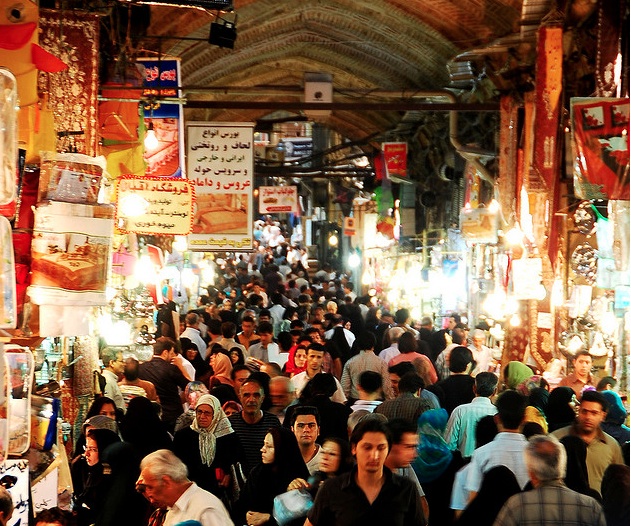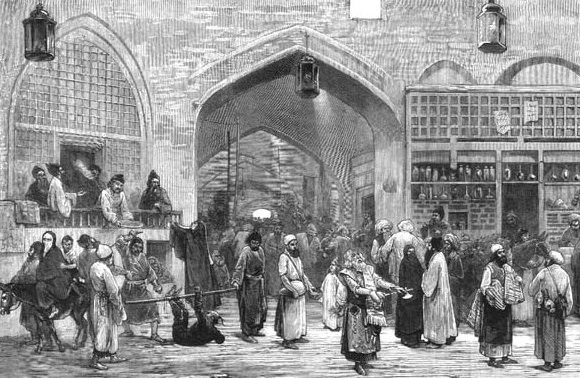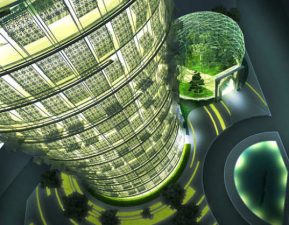 Green Prophet’s Merhdad, explores some of the “urban” issues in giving the ancient 500 year old Bazaar of Tehran, sustainable by design, a modern facelift. Plans in a new $20 million budget call for bike paths, trams, and a strengthened infrastructure for Tehran’s beating heart.
Green Prophet’s Merhdad, explores some of the “urban” issues in giving the ancient 500 year old Bazaar of Tehran, sustainable by design, a modern facelift. Plans in a new $20 million budget call for bike paths, trams, and a strengthened infrastructure for Tehran’s beating heart.
In July 2010, Nader Karami, the mayor of Zone 12 of Tehran announced that a budget of about $20 million USD has been allocated to the rehabilitation and regeneration plan of the Grand Bazaar of Tehran. This was discussed in a meeting with the city council of Tehran.
The necessity of executing such a plan has been felt by the people of the Bazaar, especially the businessmen there, over the last 50 years. This 500-year-old economic heart of Tehran and Iran has an old physical fabric and infrastructure. It’s considered the largest bazaar in the world. However, due to problems like accessing the inner cores of its infrastructure, strikes over taxes, permission from the retail shop owners, budget problems, and so on, successful execution of the similar rehab plans has not been possible.
How precious is the Bazaar of Tehran?
The bazaar, or shuk as it’s called in some places, is an important element of any traditional Islamic and Iranian city. The common form of any bazaar is sustainable by design: it includes pedestrian corridors whose main activity is trade and business. And there have also been residential neighborhoods built around the bazaars. For example the bazaar of Tehran has had a population of between 30,000 to 40,000 people in the early 1940s (this population is now about 7,000).
The more important bazaars of the cities of the Middle East are roofed, so that the shoppers are protected from the harsh climate, particularly during the hot summers.
 The heart of Tehran then, and now: The Tehran Grand Bazaar, circa 1873. Via wikipedia
The heart of Tehran then, and now: The Tehran Grand Bazaar, circa 1873. Via wikipedia
About 500 years ago, in the era of Shah Tahmasb, one of the kings of the Safavid dynasty, the bazaar of Tehran was built. It has not been as brilliant as the bazaars of major Iranian cities like Isfahan, Tabriz, Shiraz, and Yazd, but it gained importance when Tehran was selected as a capital city in the early nineteenth century by the Qajar kings. The oldest parts of the bazaar were built in this age.
In order to give prestige to the bazaar of the new capital city, it was roofed in mid-nineteenth century. At this time, the bazaar was extended to north and north-west. The European travelers, who visited Tehran in nineteenth century noted that it had economic, social, political, and religious importance.
The word “bazaar” itself is derived from Persian, which is pronounced in the same way and is used in some languages.
Traditional Values Versus Contemporary Problems
Today, the necessity of preservation and revitalization of the bazaar is recognized. It is still the center of economy of not only Tehran, but also Iran. It is also center of other activities: The Tehran Bazaar includes about 70 mosques.
Explore the Grand Bazaar in this great video:
And according to Nader Karami, this 110-hectare bazaar is the vastest pedestrian area of Iran. Every day more than one million urban travels with the destination of bazaar of Tehran are made.
However, in spite of the mentioned importance of this old element of Tehran, little attention has been paid to maintenance and repair of the infrastructure of the bazaar. The combination of old narrow pedestrian corridors with the non-standard infrastructure like electricity networks and sanitary and sewage systems has resulted in complicated problems for planners and authorities.
Every year some fire accidents occur just because of the old electricity cable network and the nearby flammable materials warehouses. In the last 10 years the number of such accidents has risen by 25 percent.
Although similar rehabilitation plans have been considered over the last 50 years, this time around the Municipality of Tehran has claimed it will provide a tramway around the bazaar, a new bicycling space, a rehabilitation of its crumbing infrastructure and an improvement of its electricity network.
Green urban planners, like myself, can only hope the plan will come to light.
More green stories on Iran:
Iran Looks to Create Biofuel
Iran Inaugurates Its First Solar CSP Plant
Celebrate Spring and Iranian New Year


